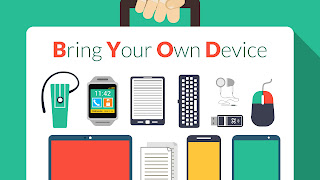Twitter Feed
Operation Golden Phoenix
This week, Dataline is participating in Operation Golden Phoenix. Operation Golden Phoenix is a four-day multi-agency collaborative training event designed to assist federal, state and local agencies with large and…
DISA Reaches out to Industry on Cloud Computing
In an interview with Computerworld , published in the New York Times, John Garing expanded on his goals for the DISA cloud computing initiative. Garing said that, “… he and…
Cloud Computing is $160B Market
According to the Financial Post, a Merrill Lynch Note estimates that cloud computing could be a $160B market by 2011. The companies that they see in the marketplace are shown…
SOA-R Educational Series: What is Cloud Computing
On July 16th, SOA-R held it’s first of six educational sessions on cloud computing for national security missions. Presenters during this first event were: Steven L Armentrout, PhDPresident & CEOParabon…
Gartner: Cloud Computing Fraught with Security Risks
Cloud computing is fraught with security risks, according to analyst firm Gartner. Smart customers will ask tough questions, and consider getting a security assessment from a neutral third party before…
The Definition of “Net-centric”
Last week, the Google Cloud Computing Group debated the definition of net-centric. The key thought was that net-centric was nothing more than internet-centric or basically “online” and therefore it really…
Cloud Computing Journal Launched
“The world’s first journal devoted to the delivery of massively scalable IT resources as a service using Internet technologies has been launched by SYS-CON Media. The all-new “Cloud Computing Journal”…
SOA-R First Session Presentations Announced
The presentations for the first session of the SOA-R Educational Series sesion have just been announced: Steven L Armentrout, PhDPresident & CEOParabon Grids, Clouds and Computation: Getting to Ground Truth…
Cloud Storage as a Service
In SAN vs cloud storage – a gray or silver lining? , Joseph Hunkins review last December’s observations of cloud storage by Chris Mellor of Techworld: “Google does not use…
Google: Model for the Systems Architecture of the Future
In December of 2005, Prof. Paul A. Strassmann of George Mason University, provided an excellent outline for cloud computing success in a netcentric environment: Network-Centric Requirements (2010)• Downtime ( 1…
- Increased employee mobility (63%), satisfaction (56%) and productivity (55%) dominate as the top drivers of BYOD. These employee related drivers are considered more important than reduced costs (47%).
- Security (39%) and employee privacy (12%) are the biggest inhibitors of BYOD adoption.
- 20% of surveyed organizations have suffered a mobile security breach, primarily driven by malware and malicious WiFi.
- Security threats to BYOD impose heavy burdens on organizations’ IT resources (35%) and help desk workloads (27%).
- Despite increasing mobile security threats, data breaches and new regulations, only 30% of organizations are increasing security budgets for BYOD in the next 12 months and 37% have no plans to change their security budgets.
- 72% – Data leakage/loss
- 56% – Unauthorized access to company data and systems
- 54% – Downloading of unsafe apps or content
- 52% – Malware
- 50% – Lost or stolen devices
- 49% – Vulnerability exploitation
- 48% – Lack of control on endpoint security
- 39% – Infrequent software updates
- 38% – Compliance
1. Create your policy before procuring technology: To effectively use mobile device management (MDM) technology for employee owned devices Policy must precede technology. Also note that these policies will have broad corporate-wide implications for IT, HR, legal, and security.
- Mobile device management
- Application security assessments
- Application testing services
- Application source code security assessments; and
- Embedded device security.
This post was brought to you by IBM Global Technology Services. For more content like this, visit ITBizAdvisor.com.
( Thank you. If you enjoyed this article, get free updates by email or RSS – © Copyright Kevin L. Jackson 2017)
Cloud Computing
- CPUcoin Expands CPU/GPU Power Sharing with Cudo Ventures Enterprise Network Partnership
- CPUcoin Expands CPU/GPU Power Sharing with Cudo Ventures Enterprise Network Partnership
- Route1 Announces Q2 2019 Financial Results
- CPUcoin Expands CPU/GPU Power Sharing with Cudo Ventures Enterprise Network Partnership
- ChannelAdvisor to Present at the D.A. Davidson 18th Annual Technology Conference
Cybersecurity
- Route1 Announces Q2 2019 Financial Results
- FIRST US BANCSHARES, INC. DECLARES CASH DIVIDEND
- Business Continuity Management Planning Solution Market is Expected to Grow ~ US$ 1.6 Bn by the end of 2029 - PMR
- Atos delivers Quantum-Learning-as-a-Service to Xofia to enable artificial intelligence solutions
- New Ares IoT Botnet discovered on Android OS based Set-Top Boxes


